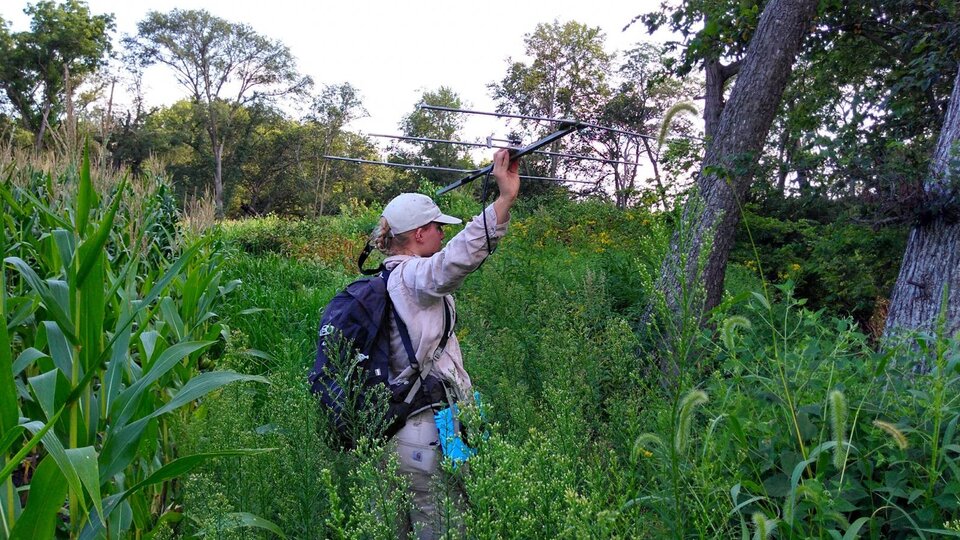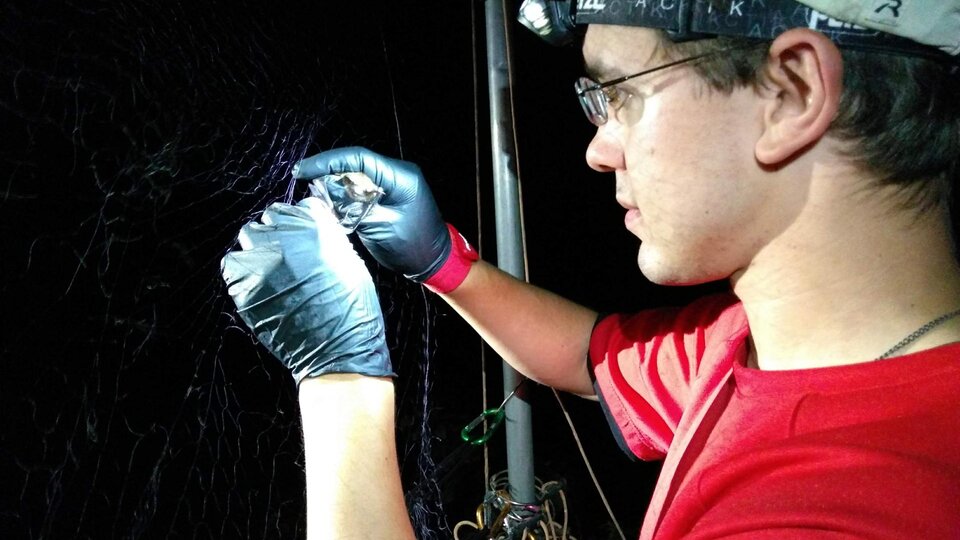Bats play a vital but often unrecognized role in agricultural landscapes. Contributions to pollination, seed dispersal, and insect predation have long been speculated, but only recently has our ability to quantify these benefits occurred. Ecosystem functions, including the supply of services valued by humans (like insect predation by bats) are critical to understanding resilience. Working with bats provides both an estimate of ecosystem services provided by bats to producers, as well as additional information regarding the relationship between ecosystem services and resilience.
How to Operationalize Resilience: Controlling Crop Pests
Bats provide many ecosystem services in agriculture, including predation of night-flying insects, for which they are estimated to save agriculture billions of dollars per year. These savings flow directly and indirectly through economics, ecology, and society in a kind of cascading effect. For example, if populations of bats that feed on crop-damaging insects are increased, fewer controls are required to eliminate the crop pest populations. As fewer insecticidal applications occur, increases in populations of other beneficial insects may also occur (pest-eating insect predators like the Mantis).
As the food web expands and natural processes solidify over time, benefits to other key areas of cropping systems are restored such as the cycling of nutrients and the formation of soil. A healthier soil biome leads to increased nutrient availability for crops and reduced applications of chemical nutrients. Our resilience management approach has reached a milestone: diversity and redundancy.
How are Bats and Redundancy Related?
When we refer to redundancy, we mean that there are multiple “actors” (in this case, microorganisms, insects, and mammals) contributing to a similar function: crop pest predation. Not only do we have bats seeking crop pests, but there are many bat species, that forage at different times, at different heights and in different habitats; and bat conservation also encourages the conditions for an array of other species, which may also provide benefits to humans. This array of species operate at different scales as well – bats traverse multiple agricultural fields in a given evening, whereas smaller species may spend their entire life on a single corn stalk.
In this way, we have created a bundled insurance policy. While our specific objective was to increase predation of crop pests, broadening our approach to include other natural processes allows for other predators to thrive. So, if bat populations decline from diseases like white-nose syndrome, multiple other species still form a robust workforce to continue the control of pest species (i.e., redundancy).
Reviewing the Resilience Approach
This example is a condensed view of how natural systems can be bolstered by farmers, ranchers, and land managers in a way that helps manage the human-built system, including agricultural systems. The key to applying resilience ideas is to manage for the entirety of your natural resources to interact based on the needs of a species or process that underlines important ecosystem services (e.g., crop pest predation), and to manage at multiple scales, for example, individual plants, fields, farms and landscapes.
We started our management with bats as they reside near the top of the crop pest food chain. By assessing and managing the needs of winged-insect predators, we have opened the door for additional species to participate in several areas of crop production: yield enhancement, pest and disease control, and bolstering soil fertility.


